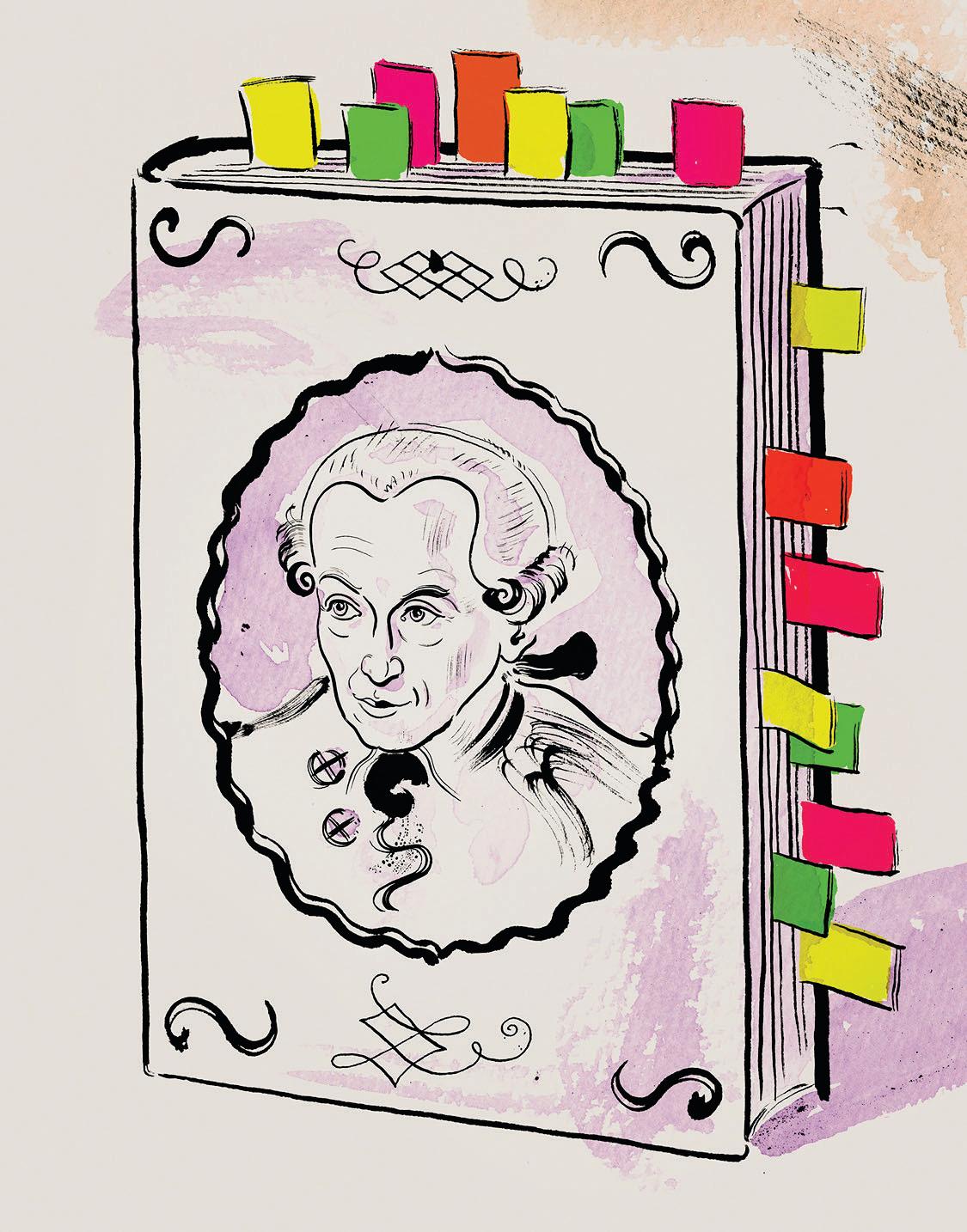Try GOLD - Free
CATEGORICAL REVOLUTION
The New Yorker
|November 03, 2025
Why Kant still has more to teach us.

Kant's life was famously dull, but he was less of a hermit than is often supposed.
In April, 1745, God appeared to a Swedish civil servant named Emanuel Swedenborg in a London tavern. Swedenborg was no wild-eyed prophet but, rather, a fifty-seven-year-old scientist and engineer who had worked for years for the Swedish crown as an administrator of mines. However, travelling around Europe while on leave, he had begun to have intense dreams about Jesus Christ, in which everyday details were shot through with mystical bliss. In one, Jesus borrowed a five-pound note from someone, and, Swedenborg recalled, “I was sorry he had not borrowed it from me.” Finally, God showed himself while Swedenborg was at dinner, taking the form of a man who told him not to eat too much.
From that night until his death, twenty-seven years later, Swedenborg devoted himself to conversing with “spirits and angels” and writing down the mystical truths that they told him. As Swedenborg’s fame spread across Europe, in the seventeen-sixties, he came to the attention of a junior professor of philosophy at the University of Königsberg, in eastern Prussia, named Immanuel Kant. Then in his late thirties, Kant considered himself, as he wrote to a friend, free of “any trace of a way of thinking inclined to the miraculous.” Yet he admitted to being interested in Swedenborg, especially because the man's powers of clairvoyance seemed to have been vouched for by credible witnesses.
This story is from the November 03, 2025 edition of The New Yorker.
Subscribe to Magzter GOLD to access thousands of curated premium stories, and 10,000+ magazines and newspapers.
Already a subscriber? Sign In
MORE STORIES FROM The New Yorker

The New Yorker
BODIES POLITIC
Jamar Roberts at New York City Ballet.
6 mins
November 03, 2025

The New Yorker
JUST MISUNDERSTOOD
How did monsters get so awfully nice?
12 mins
November 03, 2025

The New Yorker
CATEGORICAL REVOLUTION
Why Kant still has more to teach us.
18 mins
November 03, 2025

The New Yorker
RECONSTRUCTED
In \"Monuments,\" the Confederacy surrenders to nineteen artists.
6 mins
November 03, 2025

The New Yorker
Outcomes
On his first day back at Winslow College's climbing wall after the long winter break, Nolan checks the belay sign-up sheet and sees that someone named Heidi Lane has written her name in the seven-o'clock slot every weeknight for the entire month of January.
22 mins
November 03, 2025

The New Yorker
AMERICAN FREQUENCIES
Presidential communication and the problem of precedent.
15 mins
November 03, 2025

The New Yorker
Gideon Lewis-Kraus on Rebecca West's "The Crown Versus William Joyce"
The badge of maturity, for a literary genre, is the anxiety of influence the compulsion felt by an aspiring writer to pee upon a fire hydrant that an earlier eminence once peed upon with distinction.
3 mins
November 03, 2025

The New Yorker
THE NATURAL
Jennifer Lawrence goes dark.
32 mins
November 03, 2025

The New Yorker
PHANTASIA
Some people can see mental images, some can't. The consequences are profound.
41 mins
November 03, 2025

The New Yorker
HIVE MINDS
\"Bugonia.\"
6 mins
November 03, 2025
Listen
Translate
Change font size

